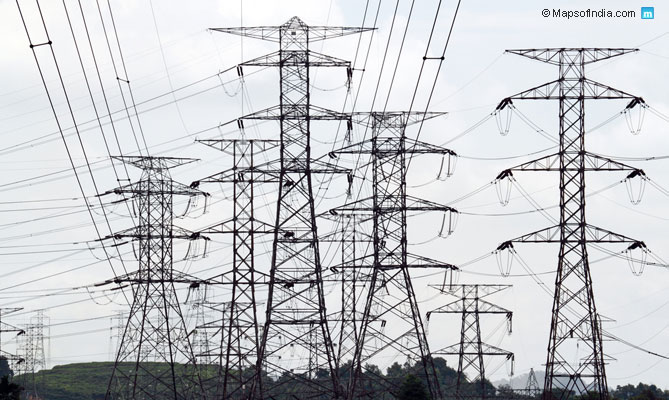All eyes were on the Minister of State for Power, Coal and Renewable Energy, Piyush Goal, when he spoke on India’s current and projected energy scenario, at the India Economic Summit (IES), which was organized recently by the WEF and CII. Sounding cautiously optimistic on India’s intention and ability to turnaround its energy sector that has been languishing for want of clear policy direction and investment.
The Minister spoke about the need for massive investment in the energy sector and gave a call for international investors to seriously look at the opportunity that India is in the process of throwing open. The numbers are indeed impressive as is the opportunity for the developed world. According to the Minister, India will need US$ 250 billion over the next five years to meet the growing demand for power in India.
What was interesting to note was that this included US$ 100 billion in Renewable energy and US$ 50 billion in transmission and distribution infrastructure. This is a sure indicator of India’s changing perception and priority towards renewable energy. That’s the good news.
However, there was a worrying announcement as well. Coal India is set to double the coal production by 2019. This along with, private sector production in commercial mining of coal, will mean an increasing dependency on coal based power generation, which already accounts for the largest share of power generation in India.
The country has one of the largest reserves of coal and it is only natural that India exploit this natural resource to the maximum. But this cannot come at the cost of the environment and people’s health.
When China opened up, it followed a policy for massive expansion of its thermal power generation capacity, pushing coal mining to its maximum and further supplementing the shortfall through imports. The result, China’s air quality today stands amongst the worst, the impact of which will be known several decades later.
Through the expansion years of the 80s and 90s, no one imagined the consequences of this massive expansion of power generation capacity but today China has learnt it the hard way and is now pushing for clean tech in power generation, by increasing investment in research and renewable energy technology.
Several speakers at the IES Summit also voiced their concerns over India following China’s path and increasing its dependency on using coal for power generation. India is already under pressure from the international community to do more for reducing carbon emissions and blindly increasing coal based power generation isn’t going to help.
So what are the options for India?
India must significantly increase investments in renewable energy, which includes solar and wind power.
Solar energy
There has been significant improvement in solar technology that has resulted in a dramatic fall in power generation cost. In the US, the cost of solar power in 2010 was US$ 6.40 per watt. In 2014, the costs have dropped to US$ 0.55 per watt. While the cost of grid supplied solar power is still on the higher side, once again the shift in focus to off-the-grid solar power generation is taking place.
Solar energy has been harnessed for decades now but the reason for it not being adopted on a wider scale has been the cost of solar power generation and limitation in energy storage. In the early years of solar power generation, most of the units deployed were off-the-grid, in other words, solar power harnessed was mostly for individual use as an alternate to the usual power supplied by utilities through the grid. The costs were high and storage of power had not matured. That has now changed.
India has to simultaneously encourage the use of grid based generation, micro grid and rood-top based micro power generation. The government must amend building and town planning laws to encourage the use of solar power and make the use of renewable power mandatory, in order to minimize if not eliminate, dependency on grid based power.
Energy storage: the next frontier
The balance of system costs have come down but the industry is still being held back because of limitations in energy storage technology, which is still in its nascent stage of evolution. This is the new frontier for research which can dramatically change the way people generate and consume electricity.
Today, Lithium-ion based energy storage is being used but it still has its limitations. As energy storage attracts more investments into research, the resulting improvement in energy storage capacity will open up new areas of applications.
India with its large technical manpower must take the lead and encourage the younger generation to enter this cutting edge area of energy storage that can catapult India into a leading power house for renewal energy research and technology.
Wind energy
Wind energy is also attracting a lot of investment in research and there have been improvements in technology and power generation capacity. India is one of the few countries blessed with a long coastline and therefore the sheer potential for generating wind based power is immense. Technology has now emerged where wind power is generated without using moving blades or any moving parts.
This opens up possibilities for micro wind generating units to be installed on roof tops, as there is no risk posed to human or birds, from spinning blades. Widespread use at the micro level can significantly reduce the demand for power, especially in peak summer months when the demand is at it’s highest.
Hydroelectricity
India is in a position to optimize the generation of hydro power if it can develop the available potential in India, Nepal and Bhutan. Hydro power is clean energy but the capital cost of setting up a mid-to-large power plant is very high, mainly due to difficult mountain terrain.
Countries often embark on setting up large dam projects that have had disastrous ecological impact, besides displacing large sections of people who have lived on those lands for generations. The Aswan Dam in Egypt, the Three Gorges Dam in China and the Tehri Dam project in India, have all been implemented at hugh financial cost and severely impacting the local ecology and people that have lived there for centuries.
The damage caused by the recent Uttarakhand flooding was partly attributed to man made changes to the ecosystem with rampant construction. The full impact of the Tehri Dam project will be known after a few decades.
The solution lies in India taking the initiative in focusing on developing a series of micro hydro projects. These are cheaper and faster to set up with minimum impact on the ecology. Both Nepal and Bhutan have a lot of potential for the development of micro Hydro power generation and India could undertake an integrated development with benefits to be shared by all three countries.
Nuclear power
This is a technology which offered a lot of hope in its initial years but experience of established nations like France, Canada and USA has shown that nuclear power is not really cheap but the chances of a disaster like Chernobyl or Fukushima, places this option in the high risk category with disastrous consequences.
Moreover, the developed nations are forcing India to renegotiate the terms of liability, should such an event occur. While India has already committed to walk the civil nuclear energy path, it will do well to limit the installed capacity.
Its India’s time for lead in research
Till now India was in the process of emerging from the shadows of under development and is now well poised to accelerate the process and live up to its potential. However, India is yet to harness the potential of its human resource and develop a conducive ecosystem for research and development.
For the first time, there is a lot of interest and excitement amongst the international venture capital community, which is now seriously looking at India as the next big destination for investment in research, in various emerging fields. If the government can offer suitable incentives for the development of clean energy, the coming years could well see India emerging as a focal point for cutting edge clean energy technology. It’s time for India to catch the momentum.






